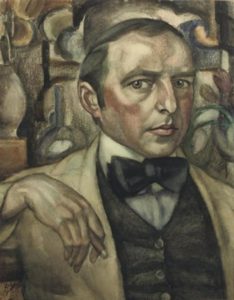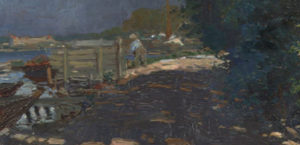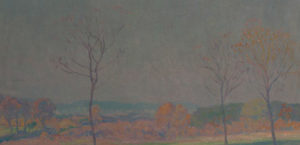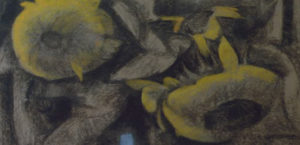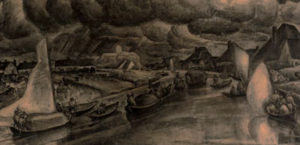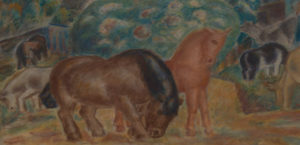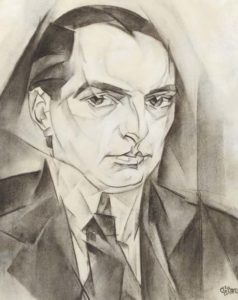Leendert Gestel was born on November 11, 1881 in Wurden, the Netherlands.
1881 - 1941
Leendert Gestel
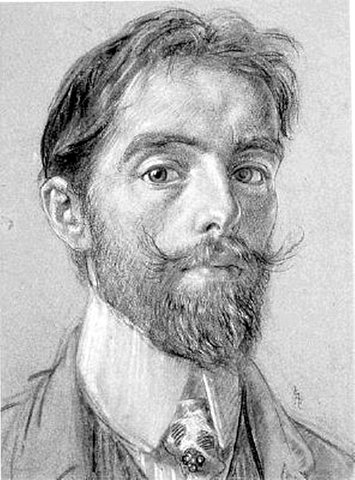
description
A Dutch painter, graphic artist and illustrator. A participant of the famous Bergen school. Along with Piet Mondrian and Ian Torop, the artist worked in a variety of styles, from Impressionism to Cubism and Expressionism, in which he showed himself most vividly.
Leendert was born into a large family. His father and uncle were professional artists and gave the boy an initial art education.
Leendert (Leo) Gestel was among the leading artists of Dutch Modernism, who did a lot to promote the advanced art trends in the country. He took part in the first exhibition of “The Circle of Contemporary Art” – an association of artists focused on avant-garde trends in painting, in particular, Cubism and Futurism. In addition to a large number of paintings and drawings, Leo Gestel was engaged in the creation of posters and the design of household items, illustrated a large number of books and magazines.
Museum of Leo Gastel, which is now popular, was created in his house in Blaricum.
Key ideas:
The work of Leo Gestel is distinguished by a striking variety of artistic styles and directions. The irresistibly bright colors of Fauvism, the strict geometry of Cubism, the thirst for Futurism and the emotional expressiveness of Expressionism – all this flows through the creative path of the artist. Gestel’s friends and associates called him Leonardo, hinting at a talent equal to the great da Vinci, and this nickname (Leo in a shortened version) was preserved for the artist for life.
The works of L. Gestel in any manner and direction really amaze with the power of the talent embodied in them. They show the author’s broad creative horizons, the depth of his aspirations and the constant desire for self-improvement. Leo began his art path as an illustrator and a master of poster art. Earning his living in this way, the artist perfectly mastered the graphic technique, which is noticeable in all his works.
Picturesque paintings of the author are a reflection of the creative quest of a whole generation of young artists. In them, we can see the crisis of the break of centuries, the liberation from the restraining fetters of the traditionalism of art and the premonition of misfortune that is characteristic of many creative people before the First World War and Second World War.
The main theme of Leo Gestel’s painting is the image of a person in various emotional states and relationships between people. His portraits are not just a copy of the appearance of a person, but an expression of sadness or joy, interest or indifference, calmness and relaxation or a boiling inner struggle. In them, the personal attitude of the artist to his model and his individual vision are also clearly visible.
As for landscapes and still lifes, Gestel found in them a wide field for artistic experiments. Paying great attention to the shape of objects and the color balance, he subtly sensed the color and rhythm of nature, its inner sound. This allowed him to fully express the harmony of the world; the artist did it in all possible ways as if performing the same symphony playing different musical instruments.
1881
1904
1911
1913
1921
1930
1941
The birth of the artist
Together with the artist Jan Slayters, he made an educational trip to Paris
Together with the artist Jan Slayters, he made an educational trip to Paris. This trip was of great importance for the development of the artist’s creative method. In France, he got acquainted with the works of contemporary painters, such as Van Gogh, Matisse and Derain, and also studied the art of the past centuries. When returned home, Gestel rented a workshop on the attic floor and began to actively apply the knowledge gained in practice.
Settled in the colony of artists in Bergen
Settled in the colony of artists in Bergen, where he worked all summer. Gestel had many acquaintances among artists working in the settlement and began to return here almost every summer. In the same year, he took part in the first exhibition of “The Circle of Contemporary Art”, where he presented eight of his works. The most lively reaction was caused by the recently painted canvas “Lady with a cigarette”, which was bought by influential art collector Pete Boendermaker. A year later, the second exhibition of the society took place, where the artist exhibited 11 canvases. Two of them were purchased by Ms. Kröller-Müller for her collection.
The first personal exhibition of the artist
From March 15 to April 9, the first personal exhibition of the artist was held in The Hague. 150 works were presented at it, in most of which the influence of Cubism and Futurism was noticeable. Gestel spent next spring and summer in Mallorca with his wife and Samuel (Mommie) Schwartz, one of the members of the Bergen school. During this period, Cubism and Futurism in Gestel’s work were manifested most strongly.
Settled in Bergen
Settled in Bergen, where he lived in a building built for him by his friend, architect Stryfkerk. He made several trips to Europe, staying long with his friends Gustav de Smet and van den Berge in the Lateme colony of artists in Belgium. After a big fire in 1929, which resulted in the burning of a large number of works, he moved to Blarikum in North Holland.
In 1933, the artist suffered a serious operation
The artist painted very little because of health problems. He mostly worked with nudes, preferring graphic techniques. In the later works of Gestel, horses, which the artist was fond of all his life, often appeared. In 1933, the artist suffered a serious operation, after which he could not be rehabilitated for a long time.
The death of the artist
He passed away on November 26, 1941 in Hilversum, the Netherlands.
Leendert Gestel
On Artist
flow
Fauvism
Expressionism
Post-impressionism
friends
Ian Slaters
Gustav de Smet
artists
Vincent van Gogh
Andre Derain
Pablo Picasso
Georges Braque
Kes van Dongen
Franz Heysman
Dirk Filarski
Charlie Torop
By Artist
flow
Cubism
friends
Ian Slaters
Gustav de Smet
Fritz van den Berge
artists
Pete van der Hem
Karel Kolnot
Yap Min
Henk van den Idsert
Hugo Klaus
Constant Nieuvenhuis
Corneille

